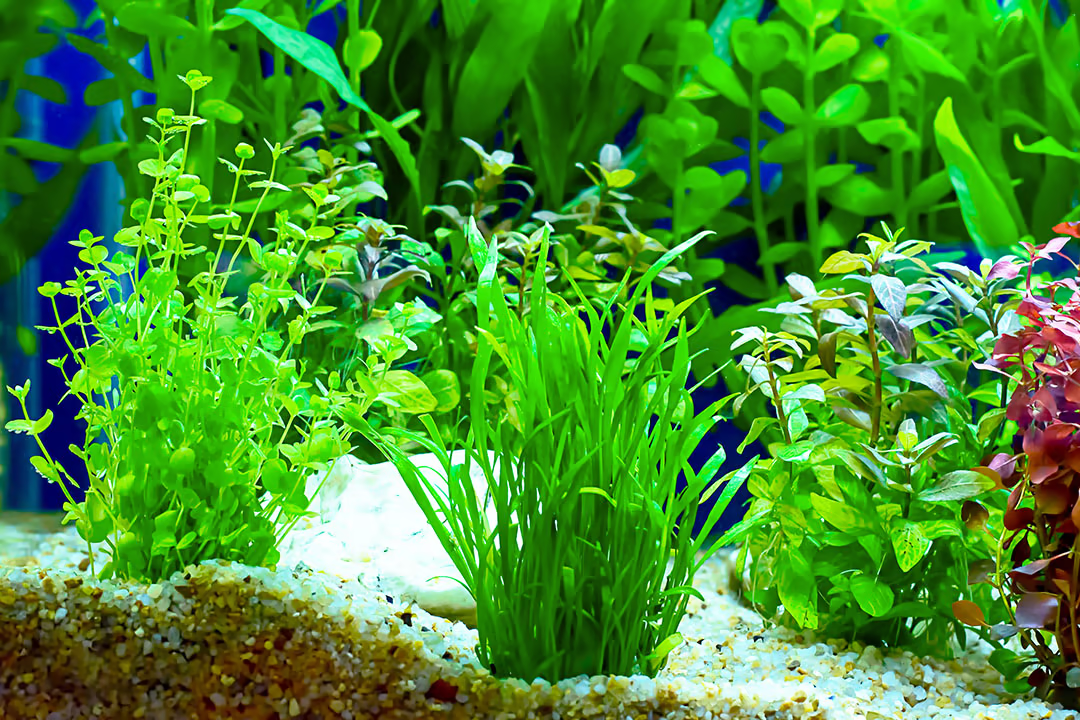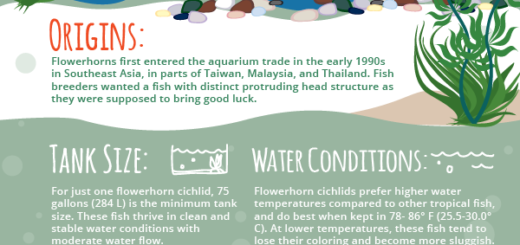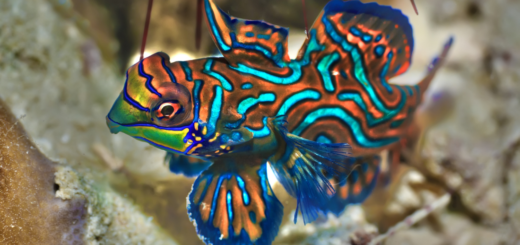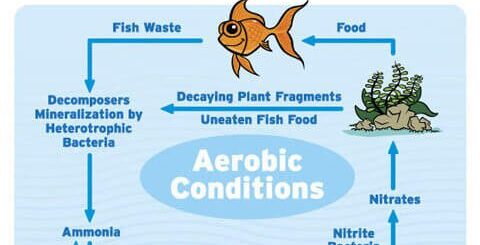Aquatic Plant Care: Adding Greenery To Your Fish Tank
If you’re looking to create a vibrant and natural underwater environment for your fish, incorporating aquatic plants into your fish tank is the way to go. Not only do these plants enhance the aesthetics of your aquarium, but they also provide numerous benefits to the fish and the overall ecosystem. From improving water quality to providing important hiding spots, this article will guide you through the essential care tips for adding greenery to your fish tank. So get ready to transform your aquarium into a lush and thriving aquatic paradise!

This image is property of cdn.shopify.com.
Click here…Your Spirit Animal is Trying to Connect…
Choosing the Right Aquatic Plants
Consider the Lighting
When choosing aquatic plants for your fish tank, the first thing you need to consider is the lighting conditions in your aquarium. Different plants have different lighting requirements, so it’s important to match the plants with the appropriate lighting level. Some plants thrive in low light conditions, while others require bright, intense light.
To determine the lighting conditions in your aquarium, consider factors such as the size of your tank, the type of light fixtures you have, and the distance between the light source and the plants. It’s also important to consider the duration of light exposure. Some plants require a certain number of hours of light each day to thrive.
Determine Water Parameters
In addition to lighting, the water parameters in your fish tank also play a crucial role in the health and growth of aquatic plants. Before choosing your plants, you need to determine the water temperature and pH levels in your aquarium. Different plant species have different temperature and pH preferences, so it’s important to match them with your current water parameters.
You can measure the water temperature using a thermometer and use a pH test kit to determine the pH levels. Make sure to adjust the water parameters accordingly if they do not meet the requirements of the plants you want to add to your tank.
Research Plant Species
Lastly, it’s crucial to conduct thorough research on the plant species you are considering for your fish tank. Look for plants that are suitable for aquariums and can thrive in the specific conditions of your tank. Some plants are more suitable for beginners, while others may require more advanced care.
Consider factors such as the growth rate, size, and compatibility with other plants and fish in your tank. Researching the specific care needs of each plant will help you make an informed decision and ensure the long-term health and success of your aquatic plants.
Preparing the Aquarium
Clean the Tank
Before adding any aquatic plants to your fish tank, it’s important to start with a clean and properly maintained aquarium. Remove any debris, uneaten food, or algae from the tank and make sure the glass or acrylic surfaces are clear. You can use an aquarium-safe cleaner or a sponge to gently clean the interior surfaces of the tank. Be careful not to use any harsh chemicals that could harm your fish or the plants.
Add the Right Substrate
Aquatic plants need a substrate to anchor their roots and absorb nutrients. There are several types of substrate available, including gravel, sand, and specialized plant substrates. When choosing a substrate, consider the specific needs of your plants and the aesthetic you want to achieve in your tank.
Ensure that the substrate is thoroughly rinsed before adding it to the tank to remove any dust or debris. Spread the substrate evenly across the bottom of the tank, making sure to create a sloping effect if desired. A substrate depth of around 2-3 inches is usually ideal for most aquatic plants.
Install a Heater and Filter
Proper temperature and water circulation are essential for the health and growth of aquatic plants. Install a heater in your fish tank to maintain a consistent temperature that suits the plants and your fish. Tropical aquatic plants generally thrive in temperatures ranging from 72°F to 82°F (22°C to 28°C), but make sure to adjust the heater according to the specific requirements of your plants.
A filter is also necessary to remove debris and maintain water circulation. Choose a filter that matches the size of your tank and consider using a filter media specifically designed to support plant growth. The filter will help keep the water clean and provide essential oxygen to the plants and fish.
This image is property of assets.petco.com.
Click here…Your Spirit Animal is Trying to Connect…
Planting the Aquatic Plants
Select Healthy Plants
When it comes to choosing aquatic plants for your fish tank, it’s important to select healthy plants from a reputable source. Look for plants that have vibrant green leaves and show no signs of yellowing, browning, or damage. Avoid plants with visible pests or diseases, as they can spread to other plants in your tank.
It’s also a good idea to choose plants that are labeled as “aquarium grown” or “pest-free,” as they are less likely to introduce unwanted organisms into your tank. Take your time to carefully inspect and select the best plants for your aquarium.
Trim the Roots and Leaves
Before planting the aquatic plants, it’s important to trim any excessively long or damaged roots and leaves. Trimming the roots will stimulate new growth and ensure that the plants establish themselves properly in the substrate. Use clean, sharp scissors or pruning shears to trim the roots, making clean cuts close to the base of the plant.
Trimming the leaves will help remove any dead or decaying parts and promote healthy growth. Remove any leaves that may be blocking the light from reaching other parts of the plant. Be gentle when trimming the leaves to avoid damaging the plant or introducing any infections.
Create a Planting Plan
To achieve a visually appealing and well-balanced aquarium, it’s important to plan the layout and arrangement of your aquatic plants. Consider factors such as the size and growth rate of each plant, as well as the available space in your tank.
Start by placing taller plants at the back of the tank and shorter plants towards the front. This will create depth and perspective in your aquarium. Arrange the plants in a way that allows each of them to receive sufficient light and space for growth. Remember to leave enough open space for fish to swim and for maintenance activities such as water changes.
Providing Proper Lighting
Choose the Right Lighting Type
Proper lighting is crucial for the photosynthesis process of aquatic plants. When choosing the lighting for your fish tank, consider the light intensity, spectrum, and duration. There are three main types of lighting commonly used for aquariums: fluorescent, LED, and metal halide.
Fluorescent lights are a popular choice for beginners, as they are affordable and provide a good balance of light for most aquatic plants. LED lights are energy-efficient and can be customized to match the specific requirements of your plants. Metal halide lights are typically used for large, high-light planted aquariums.
Research the lighting requirements of your specific aquatic plants and choose the lighting type that best suits their needs.
Position the Lights Correctly
Once you’ve chosen the right lighting type, it’s important to position the lights correctly in your aquarium. Mount the lights securely above the tank, ensuring that they cover the entire surface area evenly. Pay attention to the recommended distance between the lights and the plants, as too much or too little light can hinder plant growth.
Use adjustable light fixtures or hanging kits to position the lights at the appropriate height. Taller plants may require higher light levels, while shorter plants can thrive with lower light. Experiment with different positioning and observe the plants’ response to find the optimal placement for your setup.
Follow a Lighting Schedule
Establishing a consistent lighting schedule is essential for the health and growth of your aquatic plants. Create a lighting schedule that mimics the natural light cycle by providing a period of light followed by a period of darkness. Most aquatic plants require around 8-10 hours of light per day, but this can vary depending on the specific needs of your plants.
Use a timer to automate the lighting schedule in your aquarium. This will ensure that the plants receive a consistent amount of light each day without requiring manual adjustments. Regularly monitor the plants’ response to the lighting schedule and make adjustments as needed.
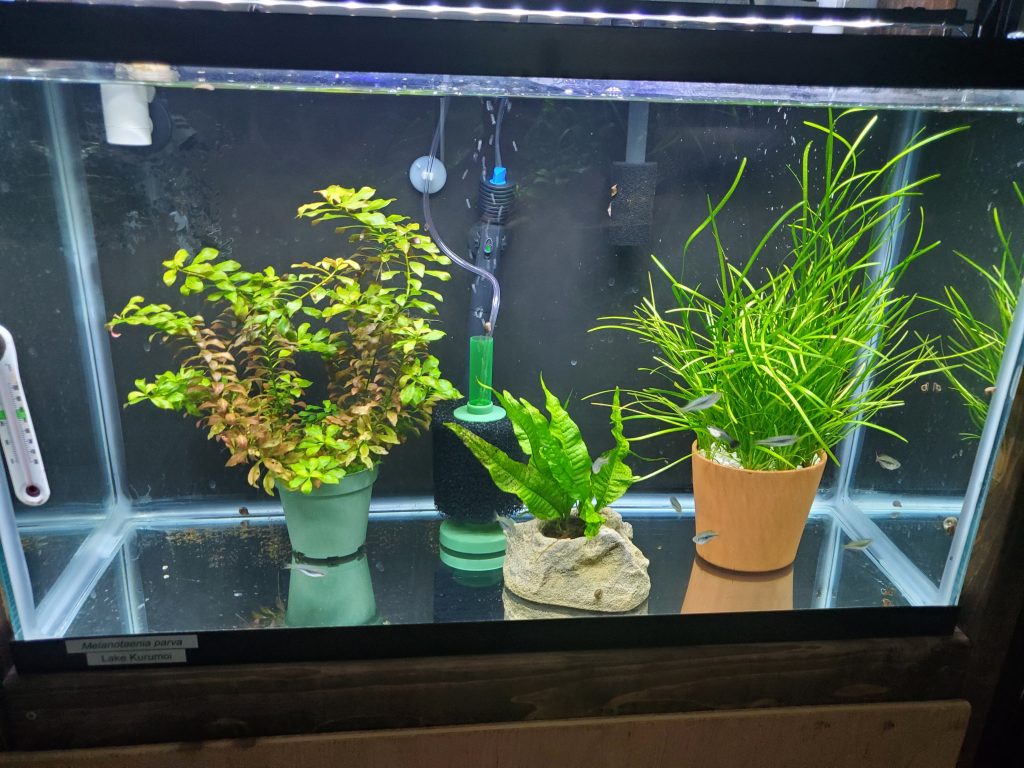
This image is property of odinaquatics.com.
Maintaining Water Parameters
Monitor Water Temperature
Stable water temperature is crucial for the well-being of your aquatic plants. Fluctuations in temperature can stress the plants and hinder their growth. Use a reliable aquarium thermometer to monitor the water temperature regularly, especially during seasonal changes or when using a heater.
If the water temperature deviates from the ideal range for your plants, adjust the heater accordingly to maintain a stable temperature. Sudden temperature changes should be avoided as they can cause shock to the plants. Consistency is key when it comes to water temperature for healthy plant growth.
Maintain Ideal pH Levels
The pH level of your aquarium water can significantly impact the health and growth of your aquatic plants. Different plant species have different pH preferences, so it’s important to maintain the ideal pH range for your chosen plants. The recommended pH range for most aquatic plants is between 6.5 and 7.5.
Regularly test the pH levels of your aquarium water using a test kit. If the pH levels are outside the desired range, you can adjust them using pH-adjusting chemicals specifically formulated for aquariums. Be cautious when making pH adjustments and follow the instructions provided by the manufacturer to prevent sudden fluctuations.
Regularly Test Water Parameters
In addition to temperature and pH, it’s important to regularly test other water parameters such as ammonia, nitrite, and nitrate levels. These parameters can have a significant impact on the health of your aquatic plants and overall water quality.
Ammonia and nitrite levels should ideally be at zero, as they can be toxic to plants and fish. Nitrate levels should be kept below 20-30 ppm for optimal plant growth. Use reliable test kits to monitor these parameters and take appropriate actions, such as water changes or adjusting the filtration system, if any levels are out of range.
Fertilizing the Aquatic Plants
Understand Nutrient Requirements
Like any other plants, aquatic plants require essential nutrients to grow and thrive. These nutrients include macronutrients such as nitrogen, phosphorus, and potassium, as well as micronutrients such as iron, magnesium, and calcium. While some nutrients are naturally present in the aquarium water, others may need to be supplemented through fertilization.
Understanding the specific nutrient requirements of your aquatic plants is crucial for their long-term health. Certain plants may have higher nutrient demands, especially if they are fast-growing or have intense colors. Research the specific nutrient requirements of your plants and adjust your fertilization routine accordingly.
Choose the Right Fertilizer
Choosing the right fertilizer for your aquatic plants is essential for providing the necessary nutrients. There are two main types of fertilizers used in aquariums: liquid fertilizers and substrate fertilizers. Liquid fertilizers are added directly to the water column, while substrate fertilizers are placed in the substrate to provide nutrients directly to the roots.
Consider the specific needs of your plants and the nutrient deficiencies in your tank when selecting a fertilizer. Look for fertilizers specifically formulated for aquatic plants, as they contain the necessary macronutrients and micronutrients in the correct ratios. Follow the instructions provided by the manufacturer for optimal results.
Follow a Fertilizing Schedule
Establishing a regular fertilizing schedule is important to ensure consistent nutrient availability for your aquatic plants. Monitor the growth and color of your plants to determine the frequency of fertilization. Fast-growing plants may require more frequent fertilization, while slow-growing plants can be fertilized less often.
Follow the instructions provided by the fertilizer manufacturer for the recommended dosage and frequency of application. Avoid over-fertilizing, as this can lead to nutrient imbalances or algae blooms. Regularly monitor the nutrient levels in your tank to fine-tune your fertilization schedule for optimal plant growth.
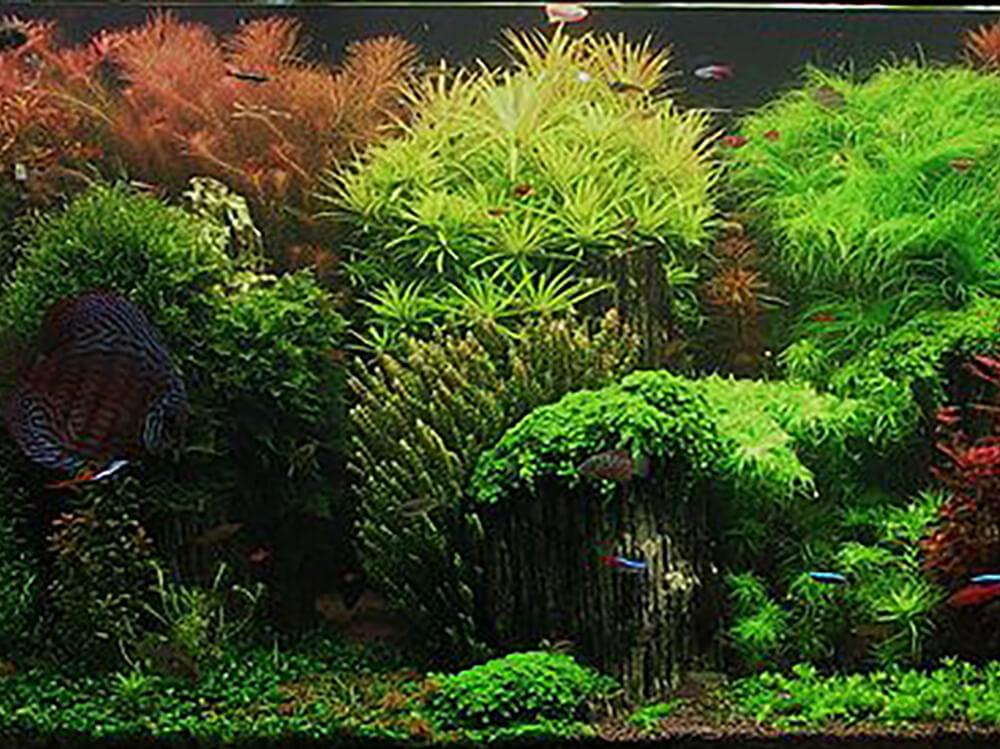
This image is property of www.swelluk.com.
Pruning and Trimming
Remove Dead or Damaged Leaves
Regular maintenance, including pruning and trimming, is essential to keep your aquatic plants healthy and maintain a visually pleasing aquarium. Inspect your plants regularly and remove any dead or damaged leaves to prevent the spread of diseases and to promote new growth. These leaves may turn yellow, brown, or become translucent.
Use clean, sharp scissors or pruning shears to make clean cuts close to the base of the plant. Be careful not to damage the healthy parts of the plant while removing the dead leaves. Regularly removing dead or decaying leaves will help keep your aquarium clean and prevent nutrient imbalances.
Trim Overgrown Plants
Some aquatic plants have a tendency to grow rapidly and can quickly overpower your aquarium. To maintain a balanced and visually appealing tank, it’s important to trim any overgrown plants. Overgrown plants can block the light from reaching other plants and disrupt the overall aesthetic of your tank.
Trim back any excessively long or bushy stems to promote a more compact and tidy appearance. Additionally, trimming the plants encourages new growth and prevents them from becoming too top-heavy or invasive. Use your judgment to determine the appropriate length to trim, keeping in mind the growth habits of each plant species.
Keep Plant Growth Balanced
Maintaining a balanced growth of your aquatic plants is key to the overall health and aesthetics of your aquarium. Regularly inspect and evaluate the growth of each plant to ensure they are not overcrowding or overshadowing one another.
Some plants may require more frequent trimming to keep them in check, while others may need to be left untouched. By monitoring the growth patterns and adjusting the trimming routine, you can achieve a harmonious balance in your tank that allows each plant to thrive.
Controlling Algae Growth
Maintain Proper Lighting Duration
Algae growth is a common issue that many aquarium owners face. While some algae can be beneficial, excessive growth can overshadow and negatively impact your aquatic plants. Proper lighting duration plays a crucial role in controlling algae growth in your tank.
Ensure that your aquarium lights are on for a sufficient but controlled period of time each day. Overexposure to light can result in excessive algae growth. Determining the optimal lighting duration may require some trial and error, as it depends on various factors such as the intensity of the lights, the plants’ needs, and the presence of algae.
Reduce Nutrient Levels
Algae thrive on excess nutrients in the water, so controlling nutrient levels can help prevent excessive algae growth. Regularly test the nutrient levels in your tank, including ammonia, nitrite, nitrate, and phosphate. If the levels are above the recommended range, take appropriate actions such as water changes, adjusting the filter or reducing feeding to reduce nutrient levels.
Be cautious when using chemicals or additives to control nutrient levels, as they can affect the health of your aquatic plants and fish if used improperly. It’s important to strike a balance between providing sufficient nutrients for your plants and preventing or reducing algae growth.
Introduce Algae-Eating Fish or Shrimp
Another natural way to control algae growth in your fish tank is to introduce algae-eating fish or shrimp. Some species, such as Siamese algae eaters, otocinclus catfish, and Amano shrimp, have a voracious appetite for algae and can help keep it in check.
However, it’s important to research and choose fish or shrimp that are compatible with your existing tank inhabitants and conditions. Ensure that your tank can accommodate the additional species and that they have sufficient food sources other than algae, as their appetite for algae may decrease over time.
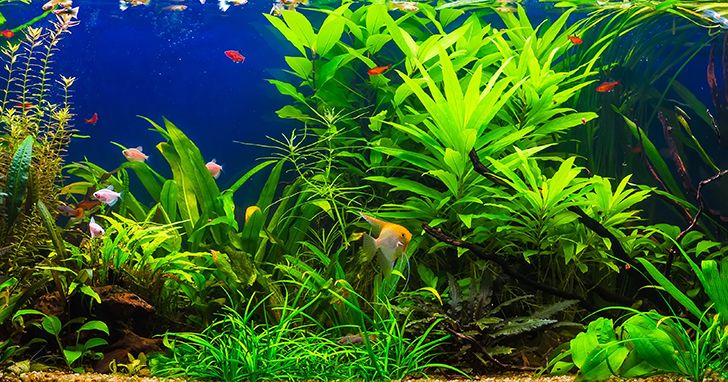
This image is property of www.liveaquaria.com.
Preventing Plant Diseases
Maintain Water Quality
Maintaining good water quality is essential for preventing the occurrence and spread of plant diseases in your aquarium. Poor water conditions, such as high ammonia or nitrite levels, can weaken the plants’ immune systems and make them more susceptible to diseases.
Regularly test the water parameters and take appropriate actions if any levels are out of range. Perform regular water changes to keep the water clean and remove any accumulated toxins or waste. Additionally, ensure that the filtration system is properly maintained and functioning effectively to maintain optimal water quality.
Avoid Overcrowding
Overcrowding your aquarium with too many plants can create an environment that is conducive to the spread of diseases. Insufficient space between plants can result in poor airflow and increased humidity, creating a favorable environment for the growth of pathogens.
When planning the layout of your tank, consider the growth habits and space requirements of each plant species. Provide enough space between the plants to promote proper airflow and reduce the risk of disease transmission. Regularly inspect the plants for any signs of diseases and isolate or remove affected plants promptly to prevent the spread.
Quarantine New Plants
Introducing new plants to your aquarium without proper quarantine can introduce unwanted pests or diseases. Before adding any new plants to your tank, it’s important to quarantine them for a period of time to observe any signs of diseases or pests.
Keep the new plants in a separate tank or container for a few weeks and monitor them closely. Check for any signs of pests, such as snails, aphids, or other insects. Additionally, inspect the plants for any signs of diseases, such as discoloration, spots, or unusual growth. Only introduce the plants to your main tank once you are confident they are healthy and pest-free.
Dealing with Pests
Identify Common Aquatic Pests
Pests can be a nuisance in your aquarium and can cause damage to your aquatic plants. It’s important to be able to identify common aquatic pests so that you can take appropriate actions to control and eliminate them.
Some common aquatic pests include snails, aphids, planaria, and hydra. Snails can multiply rapidly and feed on plant leaves, while aphids and planaria can also cause damage. Hydra are small, tentacled organisms that can sting and prey on small aquatic animals and plants.
Regularly inspect your plants for any signs of pests and take immediate action to prevent their spread.
Implement Pest Control Methods
If you notice the presence of pests in your aquarium, it’s important to implement appropriate pest control methods to minimize the damage to your plants. There are several ways to control pests in your tank, including manual removal, chemical treatments, and biological control.
For manual removal, you can physically remove and dispose of the pests from your tank. This can be done using tweezers, traps, or by simply picking them off the plants. Chemical treatments, such as specific medications or insecticides, can also be effective in controlling certain pests. However, it’s important to follow the instructions provided by the manufacturer and consider the potential impact on other tank inhabitants.
Biological control involves introducing natural predators that feed on the pests. For example, certain fish species, such as Siamese algae eaters or assassin snails, can help control snail populations. This method provides a more natural and sustainable approach to pest control.
Use Natural Predators
Incorporating natural predators into your aquarium can help prevent and control the occurrence of pests. Some fish and invertebrate species are known for their ability to prey on common aquarium pests.
For snail control, consider adding certain fish species like loaches or pufferfish that feed on snails. Assassin snails are also effective in controlling snail populations. Additionally, Siamese algae eaters, Amano shrimp, or nerite snails can help control algae growth.
Research the compatibility and specific feeding habits of different fish and invertebrates to choose the most suitable natural predators for your specific pest control needs.
In conclusion, adding aquatic plants to your fish tank can enhance the aesthetic appeal, provide natural filtration, and create a more vibrant and healthy ecosystem for your underwater friends. By considering the lighting, water parameters, and plant species, preparing the tank properly, providing the right lighting, maintaining water parameters, fertilizing appropriately, pruning and trimming, controlling algae growth, preventing plant diseases, and dealing with pests, you can ensure the successful growth and maintenance of your aquatic plants. With proper care and attention, your fish tank can transform into a beautiful underwater garden filled with lush greenery.


